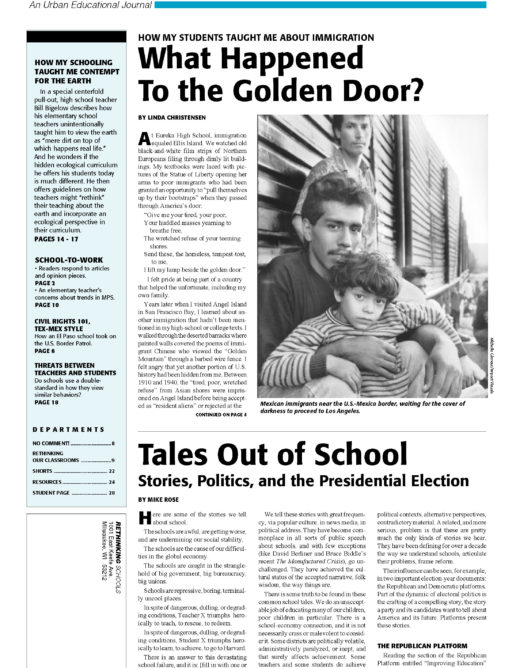Preview of Article:
City Kids, City Dreams
Picture the perfect city school: the classrooms are always quiet, the cafeteria calm, the hallways orderly. No fights, no hassles, no graffiti. Bells ring, mimeo machines hum, paychecks are delivered. The place is efficient, clean, peaceful. No kids? No problem. In this context, even to raise the question of the value of city kids is to sound slightly mad.
Most city teachers struggle mightily to do a good job despite inadequate resources and difficult circumstances. But the structure of most city schools — the strict schedule, the division of knowledge, the press of time, the pretense toward rational efficiency, and the huge numbers of students — leads to a factory-like operation characterized by hierarchy, control, and anonymity. This structure, in turn, transforms teachers into clerks and students into objects to fear and coerce.
We do not contend that teaching in the city is identical to teaching in wealthy suburbs or rural areas. It is better in some ways, harder in others, interestingly similar yet importantly unique.
Most powerful, hopeful learning begins with the learners. Knowing city kids as learners, discovering them as three-dimensional beings, as fellow creatures, is an important place for teachers to begin. What experiences, knowledge, and skills do kids bring with them to school? What kinds of thought and intelligence are there to challenge and nurture? A sustained engagement with these questions is a basic starting point for city teachers. It is followed closely by the demand to create an environment for learning that is wide enough and deep enough to nurture and challenge the huge range of students who walk through the classroom door.
We reject the notion that city kids (or city teachers or the city itself, for that matter) can best be understood as all deficit, all danger. We see, instead, a sense of life, energy, freedom, and hope in the city and in poor, immigrant, and African-American communities.</p

